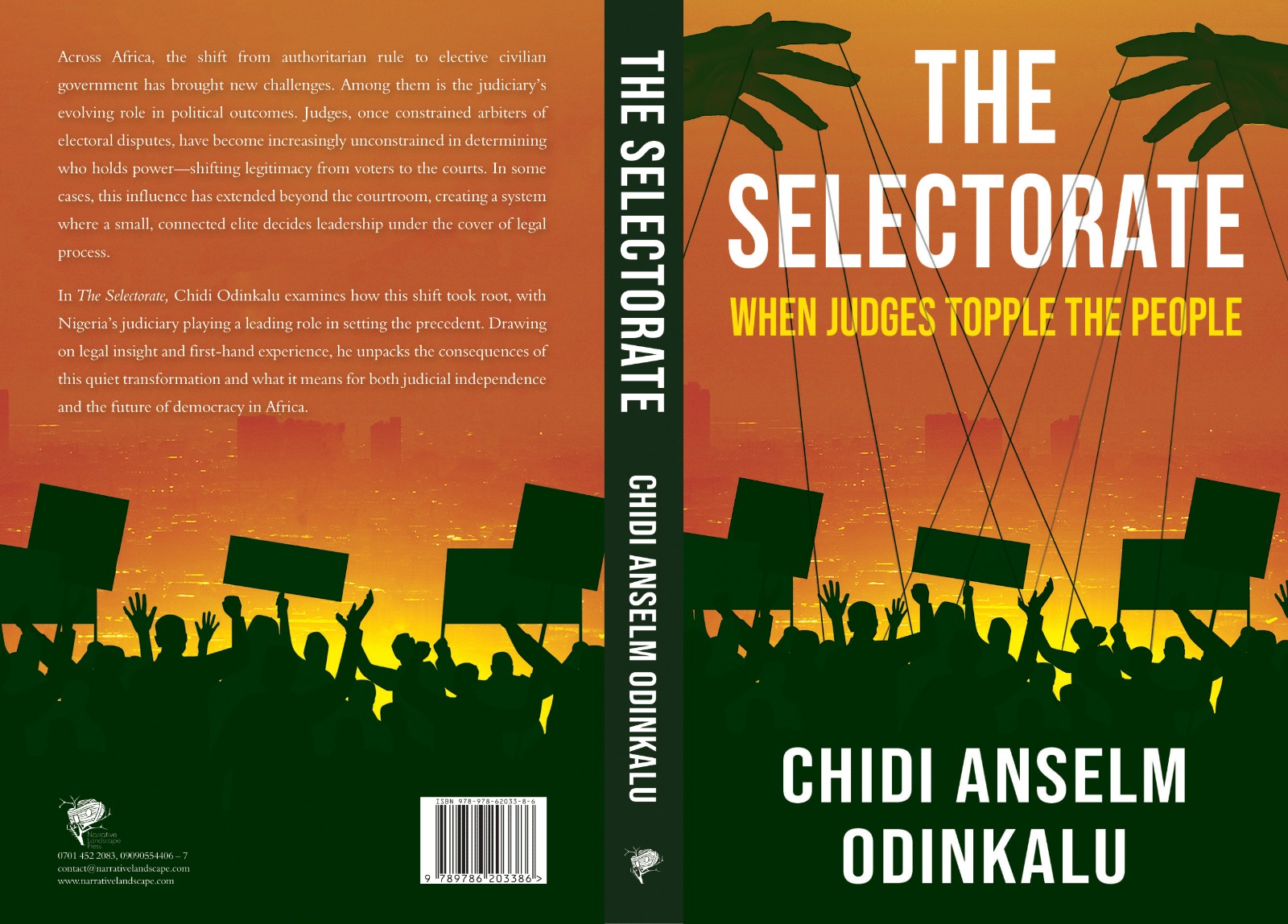By Yusuf Alli
The Independent Corrupt Practices and Other Related Offences Commission (ICPC) on Tuesday said the Judiciary is on top of the Nigeria Corruption Index between 2018 and 2020.
It claimed that about N9, 457,650,000.00 (N9.457 billion) was offered and paid as bribe by lawyers.
Six female judges, according to the agency, reported that they were offered N3, 307,444,000.00 (N3.307billion) and five male judges reported N392, 220,000(N392.2million).
The anti-corruption commission said the cases of outright demand and offer of bribes were “mostly linked to election matters.”
These details are contained in a report: “Nigeria Corruption Index: Report of a pilot survey”, which was made available on Tuesday by the Chairman of ICPC, Prof. Bolaji Owasanoye (SAN) in Abuja.
The survey was carried out by the Anti-Corruption Academy of Nigeria, the intellectual arm of the ICPC.
Owasanoye said the Nigeria Corruption Index(NCI) “indicates that both the public and private sectors are complicit in the high corruption levels in Nigeria.
“The survey also identifies the specific practices that are contributing to the corruption levels. This is the sort of information that stakeholders require to plan and evaluate their anti-corruption work.
“ICPC is committed to stopping corruption in Nigeria using all lawful means and capabilities, including deployment of knowledge and data for effective anti-corruption action.”
The NCI explained in details the rot in the Judiciary.
The report reads: “Overall, the justice sector had the highest level of corruption with a score of 63. The level of corruption in the justice sector was heightened by stupendously high amounts of money offered as bribes to judges by lawyers handling high electoral and other political cases.
“A large percentage, 73 per cent of justice sector respondents did not experience a situation of outright demand or offer of bribe. Nevertheless, it remains alarming that 16 per cent of respondents had experienced such blatant demands or offers of bribes.
“Follow up discussions indicated that the cases of outright demand and offer of bribes are mostly linked to election matters.
“Money involved in the high-level corruption in this sector was categorized into money demanded, offered or paid. Demands are made by court officials including judges, while bribery offers and payments are made by lawyers or litigants.
“The total amount of money reported by the Justice sector respondents as corruptly demanded, offered and paid between 2018 and 2020 was N9,457, 650,000.00 (N9.457 billion).
“78 respondents constituting 8.7 per cent of all justice sector respondents reported offers or payments of bribes to influence the judicial process. Out of the 78 justice sector respondents that reported amounts of money offered or paid, 63 were lawyers. This number makes up 9.9 per cent of all lawyers surveyed in the justice sector. The 63 lawyers that reported payments were mostly male being 69.8 per cent, while their female colleagues constituted 30.2 per cent of that population.
“In all, the total amount of money reported by lawyers was N5,733,986,000.00. The amount reported by female lawyers was N918,045,000 while male lawyers reported N4,815,941,000(N4.8billion).
“These amounts made up 9.71% and 50.92 per cent respectively of the total amount reported by justice sector respondents. Lawyers reported 60.63 per cent of the bribes offered and paid by justice sector respondents.
“The amount of money offered to judges was next in volume to payments made by lawyers. In all, N3,699,664,000 (N3.699billion) was reported by 11, that is 8.9 per cent of the 123 judges surveyed. 6(54.5 per cent) out of the judges that reported the offers were female, while 5(45.5 per cent) were male.
“Although, the females were just slightly more in number than the males, the females reported a substantially higher amount of money.
“The total reported by the six(6) female judges was N3,307,444,000 while the five (5) male judges reported N392,220,000.00. These amounts made up 34.97 per cent and 4..15 per cent respectively of the total amount reported by justice sector respondents. Judges reported 39.12 per cent of the bribes offered and paid by justice sector respondents.
“The court staff reported the lowest amount of money offered as bribe to influence the outcome of a judicial process. The total amount of money reported by court staff was N24,000,000…”
The document gave the breakdown of the percentage of those most responsible for bribe for judgment situations as follows: Lawyers (27.17 per cent); Litigants personally(21.96 per cent) Court Staff(Clerks, Registrars etc)—(21.54 per cent); Judges (16.88 per cent), Government MDAs (7.37 per cent); No experience on the matter(3.06 per cent); Chose not to say(1.01 per cent) and others 1.01 per cent.
ICPC also cited alteration of court documents as part of the corruption in the Judiciary.
The report said: “Grand corruption in the justice sector also manifests in the form of fraudulent alteration of court documents.”
“In the experience of justice sector respondents, court staff are most responsible for this corrupt practice.
The report gave further insights into other forms of corruption in the Executive and the Legislative sectors.
The report added: “The private business sector ranked next to the justice sector in corruption levels, although this sector had a score of 33 in monetary corruption, it had score of 55 in non-monetary corruption.
“Corrupt practices in the private business sector contributed greatly to the national level of corruption. This sector had an overall corruption score of 44.
“The high level of corruption in the private business sector can be easily overlooked while concentrating on corrupt practices in governmental spaces. The high corruption score of the private business sector serves as a reminder of the need to stop corruption in both private and public spaces.
“Many of the corrupt practices found in the private business sector involve collaboration or joint participation with government officials.
“The Executive and Legislative sectors had overall corruption scores of 42 and 41 respectively. In monetary corruption, the Executive sector with a score of 33 had a higher level of corruption than the Legislative sector, which had a score of 27.
“However in non-monetary corruption the Legislative sector with a score of 55 surpassed the Executive which had a score of 51. Some of the corrupt practices found in these two sectors involved the joint involvement of parties from both sectors. “
The report indicted MDAs of engaging in corrupt practices by footing the bills of legislators on oversight visits.
It also highlighted the methods being used by MDAs to perpetrate fraud.
It said: “The link between absence of transparency and corruption is illustrated by the sponsorship of legislative oversight visits by MDAs. Legislators conduct oversight visits of MDAs. Some MDAs facilitate these visits by providing transportation, accommodation and outright cash payments.
“The sponsorship of oversights by the inspected MDAs has been said to be unavoidable because of the number of MDAs and the absence of provisions for such visits in the legislative budget.
“Any merit in this position is whittled down by the absence of public availability of the details of the legislative budget.
“So, it is possible that legislators whose oversight visits are sponsored by MDAs could also be receiving payment for the same purpose from the legislative arms of government.”
The report also uncovered abuse of legislative office through project inspections.
It said: It is not ordinarily a legislative function to inspect governmental contracts awarded to private businesses.
“However 31 per cent of private sector respondents indicated that they had experienced situations where projects were inspected by legislators.
“Money involved in facilitation of legislators’ project inspection visits are paid by private companies.”
Editors Note; Written By Yusuf Alli and originally published in TheNation




